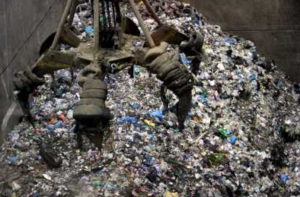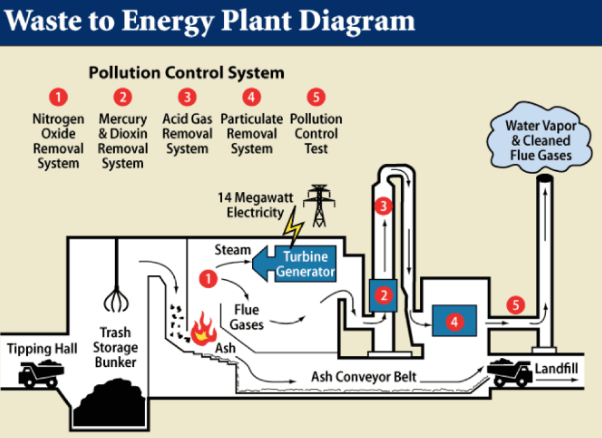Waste-to-energy (WtE) technology in garbage incineration has emerged as a promising solution to manage our growing waste problem while generating valuable energy. This innovative approach not only minimizes the environmental impact of waste disposal but also contributes to sustainable energy production. In this article, we will delve into the workings of waste-to-energy technology, its environmental implications, and its potential as a sustainable solution for waste management.
Understanding Waste-to-Energy Technology
Waste-to-energy technology involves the combustion of municipal solid waste in specially designed facilities. The process begins with waste collection and sorting, followed by incineration. During incineration, the waste is burned at high temperatures, typically between 1,600 and 2,200 degrees Fahrenheit (871-1,204 degrees Celsius), in an oxygen-controlled environment. This intense heat breaks down organic materials, while the resultant energy is harnessed for various purposes.
Environmental Benefits of Waste-to-Energy Technology
Waste-to-energy technology has several environmental benefits. Firstly, it reduces the volume of waste that would otherwise be sent to landfills, which significantly decreases the release of greenhouse gases and pollutants from landfills. The reduction in landfill usage also conserves valuable land resources and minimizes soil and groundwater contamination risks.
Moreover, the energy generated from the incineration process can offset the need for fossil fuels, thereby lowering greenhouse gas emissions. This reduction contributes to combatting climate change and aligns with global efforts to reduce carbon footprints. Waste-to-energy plants can also capture and control emissions more effectively, resulting in cleaner air and less environmental pollution.
Resource Recovery
One of the most appealing aspects of waste-to-energy technology is its ability to recover valuable resources from the waste stream. During the incineration process, metals, like aluminum and iron, can be extracted from the ashes and recycled. The heat generated can be converted into electricity or heat for industrial or residential use, decreasing our reliance on non-renewable energy sources.

Economic Viability
Waste-to-energy technology is not just environmentally friendly; it also offers economic advantages. By producing electricity or heat, these facilities can generate revenue and reduce waste management costs. Furthermore, they create job opportunities in plant operation and maintenance, boosting local economies. This economic viability enhances the sustainability of waste-to-energy projects.
Challenges and Concerns
While waste-to-energy technology holds great potential, it is not without challenges and concerns. Critics argue that burning waste could discourage recycling and waste reduction efforts, as it may create a perception that waste disposal is less problematic. Additionally, the incineration process can release pollutants, which need to be carefully controlled to avoid environmental harm.
Community acceptance is another significant concern. Locals near waste-to-energy facilities often raise health and safety concerns. To address this, modern waste-to-energy plants are equipped with state-of-the-art pollution control technologies, ensuring that emissions are well within regulatory limits.
The Future of Waste-to-Energy
Waste-to-energy technology continues to evolve, with ongoing research into making the process even more efficient and environmentally friendly. New technologies are being developed to further reduce emissions and optimize energy recovery. Additionally, waste-to-energy facilities are increasingly adopting a circular economy approach, aiming to minimize waste generation through enhanced recycling and waste reduction efforts.
Conclusion
Waste-to-energy technology in garbage incineration is a promising approach to addressing the dual challenges of waste management and energy production. Its environmental benefits, resource recovery capabilities, economic viability, and the ongoing quest for improvement make it an essential component of a sustainable waste management strategy. While challenges and concerns must be addressed, waste-to-energy technology represents a constructive step towards a cleaner, greener, and more energy-efficient future.



